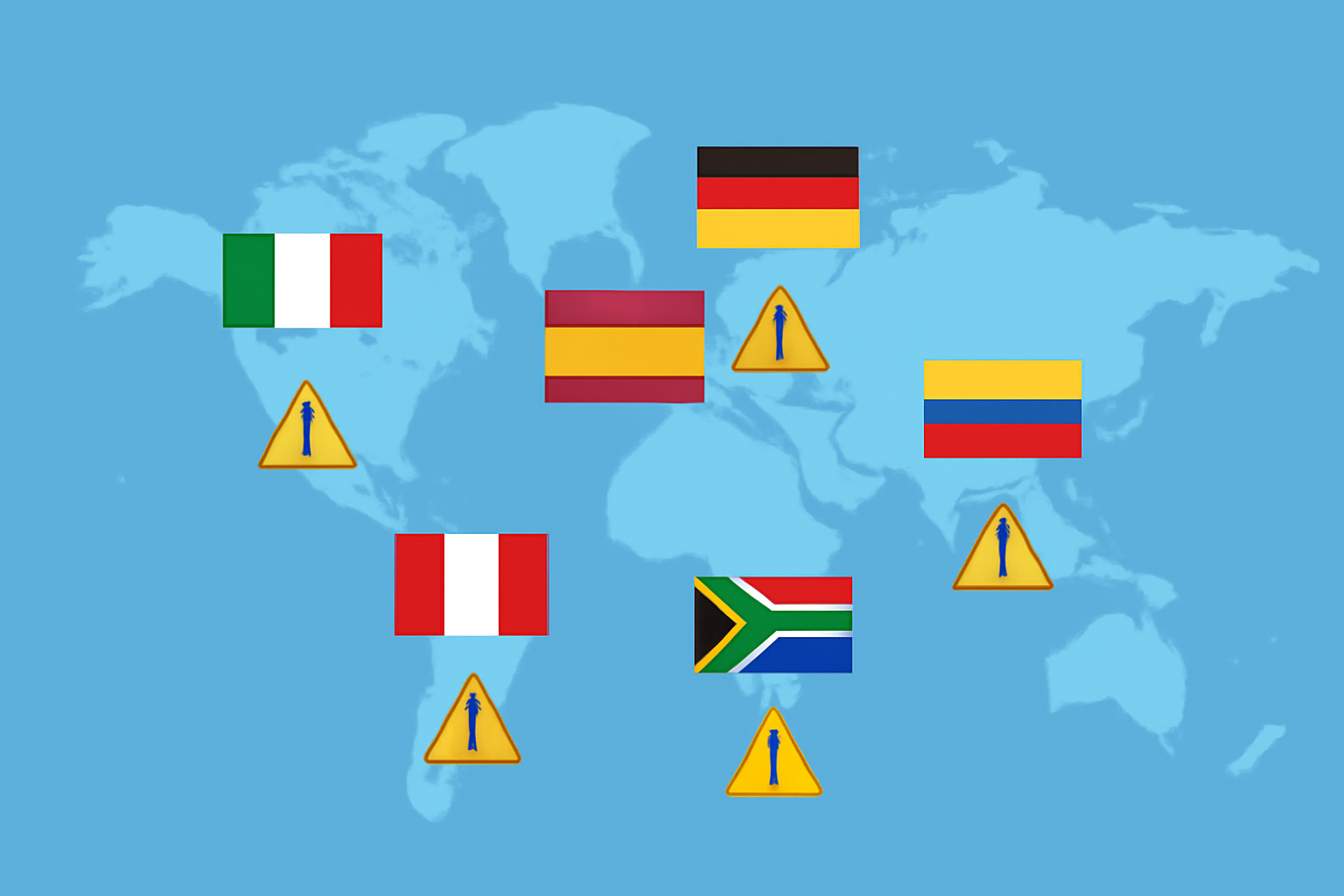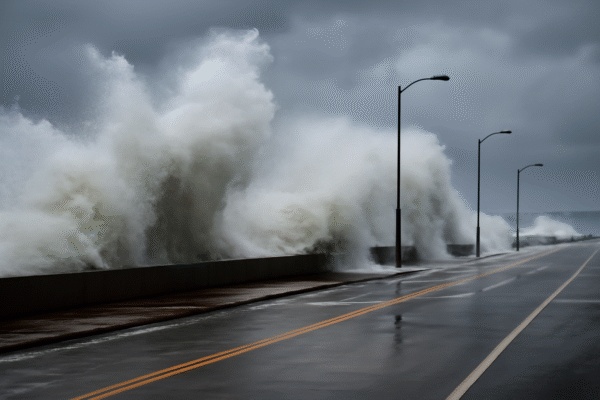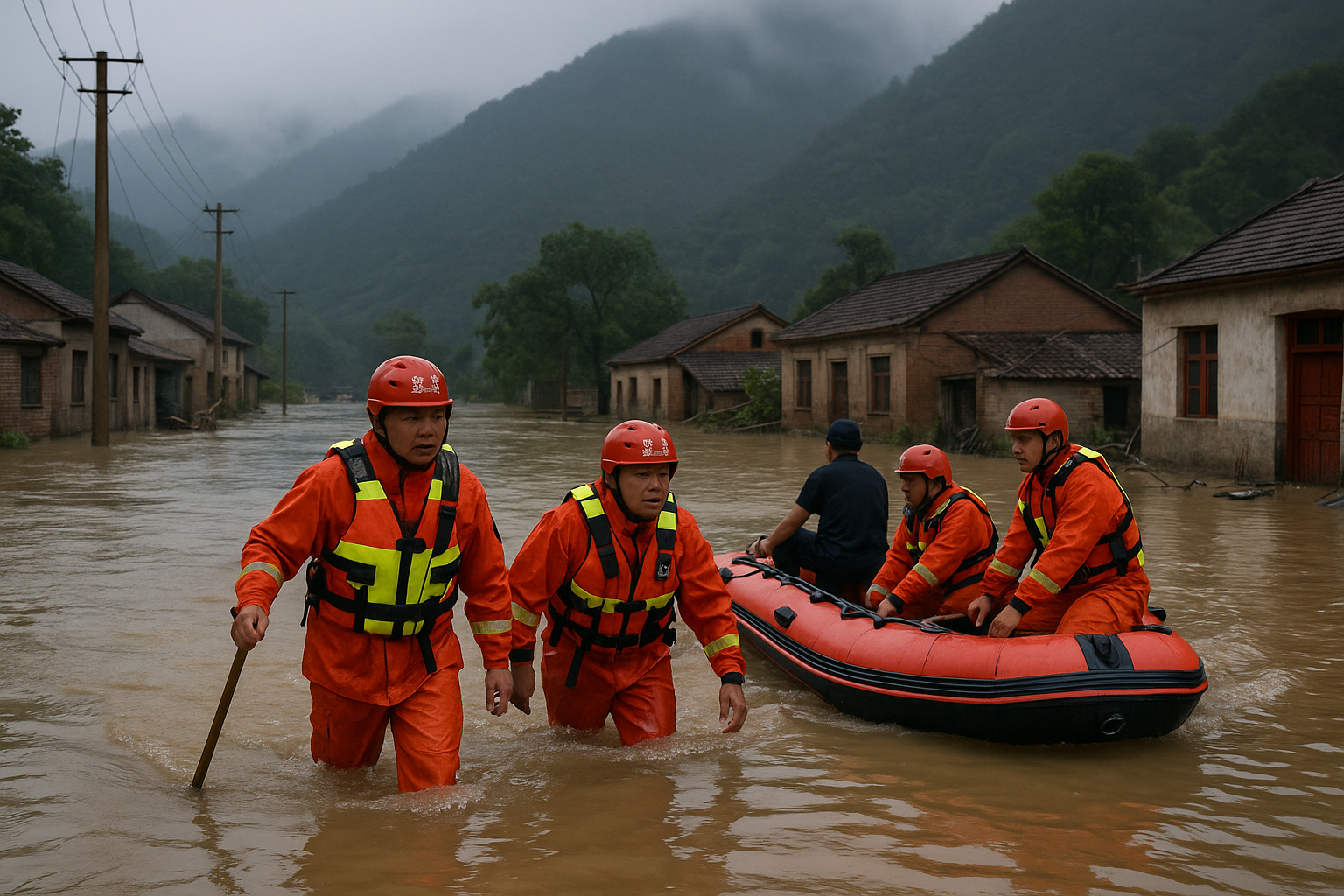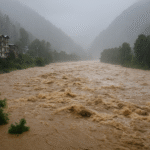Torrential rains sweeping across northern and western China have triggered widespread flooding and landslides, severely impacting infrastructure, transportation, and tourism throughout the region. Triggered by seasonal Plum Rains—a monsoonal phenomenon intensified by climate change—these extreme weather events have left at least five dead and multiple individuals missing, with thousands evacuated across provinces such as Sichuan, Gansu, Henan, and Liaoning.
As of July 3, Chinese authorities have escalated emergency responses, deploying thousands of rescue workers and engineers to assist displaced families and stabilize flood-hit communities. With forecast models predicting additional rainfall in coming days, travelers to China—especially those visiting the northern and western regions—are urged to remain alert, avoid affected areas, and monitor real-time travel advisories.
Hardest-Hit Provinces: Flash Floods and Fatalities
The bulk of the damage has been concentrated in Sichuan, Henan, and Gansu. In Henan’s Taiping town, floodwaters claimed five lives and left three missing when a local river overflowed. Rescue operations have been underway with over 1,000 workers assisting in emergency evacuations. Many rural villages across Gansu and Liaoning have seen roads submerged and homes destroyed, with rescue crews navigating unstable terrain.
The disaster comes despite China’s modern meteorological systems, underscoring the difficulty of predicting flash floods, particularly in under-resourced rural areas. Experts from the China Meteorological Administration (CMA) have attributed the worsening conditions to global climate shifts, which have intensified rainfall volumes and reduced the reliability of historical forecasting.
Infrastructure Collapse and Travel Disruptions
The flooding has wreaked havoc on infrastructure. In Beijing, July 2 saw major train suspensions and flight cancellations due to storm-related disruptions. Beijing Capital International Airport reported multiple delays, affecting both domestic and international travelers.
In Guangxi, dramatic landslides caused buildings—including a five-story structure in Xinzhou—to collapse into nearby rivers, highlighting the deadly consequences of saturated soil and unstable foundations. Transportation authorities have suspended or rerouted trains across multiple rail lines, particularly in central and southwestern China, as bridges and rail beds face flood damage.
According to the Ministry of Transport, efforts are ongoing to restore essential routes, but travelers should expect extended delays and check for updates before departure.
Tourism Sector Under Pressure
These events have created significant obstacles for tourism operators and independent travelers alike. Destinations across Sichuan, Henan, and Gansu, known for their heritage towns, scenic mountains, and historical sites, are now inaccessible or hazardous. Travel agencies have begun canceling rural tours and are rerouting group packages toward eastern and southern cities like Shanghai, Shenzhen, and Guangzhou, which remain unaffected.
The economic toll may extend to China’s agricultural and tourism-dependent regions. With floodwaters damaging crops and road access, local food supply chains and hospitality services are expected to face shortages. According to China’s Ministry of Emergency Management, over 30,000 hectares of farmland have already been affected, which may impact local cuisine-based tourism and rural homestay offerings.
Safety Tips for Tourists in Affected Regions
For travelers with current or upcoming itineraries to China, especially areas near Sichuan, Henan, Gansu, and Liaoning, the following safety measures are recommended:
- Monitor Government Travel Advisories: Use official platforms like the China Meteorological Administration (cma.gov.cn) and China’s National Tourism Administration for real-time weather alerts and travel warnings.
- Confirm Transportation Schedules: Flight and train schedules remain in flux. Use airline apps and rail service websites to confirm departure status and consider rebooking or rerouting if traveling through Beijing or flood-affected cities.
- Evacuation Preparedness: If already in a flood-prone area, adhere strictly to evacuation notices. Carry emergency supplies including bottled water, power banks, and first aid essentials.
- Reconsider Remote Travel: Rural routes, especially those near mountains or rivers, are highly susceptible to landslides. Focus your visit on unaffected urban centers during this period.
- Purchase Comprehensive Travel Insurance: Ensure your policy covers weather-related cancellations, medical emergencies, and emergency evacuations.
China’s National Response and Future Mitigation
In response to the escalating crisis, Chinese authorities have pledged increased investment in climate adaptation and disaster preparedness. Recent reports from the Ministry of Water Resources highlight ongoing construction of advanced drainage systems and the fortification of vulnerable riverbanks. Additionally, the government is exploring new AI-based flood prediction systems to improve accuracy in remote locations.
As China’s climate-related disasters become more frequent and intense, these investments aim to protect both residents and visitors. However, tourism stakeholders emphasize the importance of traveler education and proactive planning to mitigate disruption.
Final Word: Stay Safe, Stay Informed
As China faces one of its most intense flood seasons in recent memory, tourists are urged to exercise caution. While the nation’s spirit of resilience and emergency coordination provides hope for recovery, conditions remain volatile across much of the north and west.
For the best travel experience and personal safety, delay non-essential trips to flood-affected provinces, stay informed via official sources, and remain flexible with your plans. Popular and safe destinations such as Shanghai, Chengdu (outside the flood zones), and Guangzhou still offer vibrant cultural experiences and remain open to international tourists.
For more travel news like this, keep reading Global Travel Wire
















